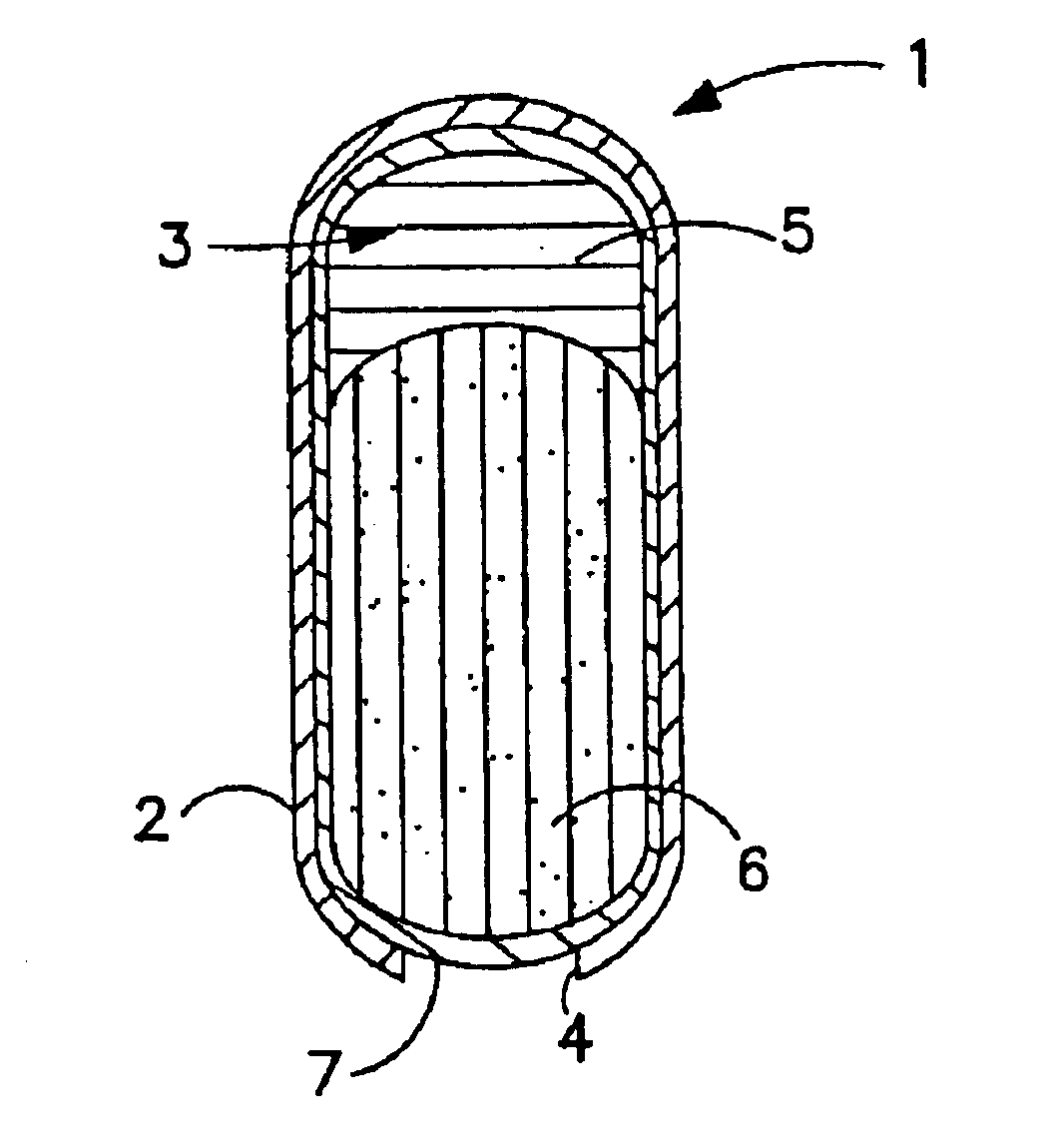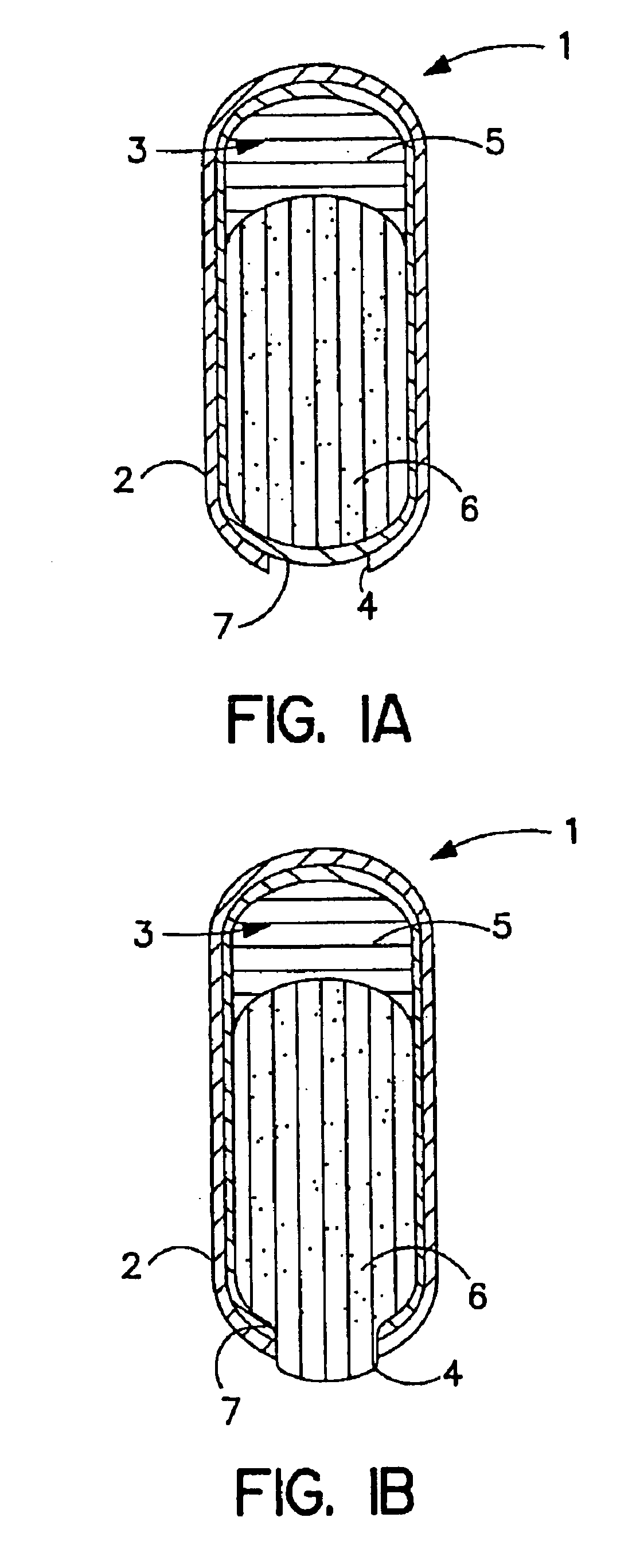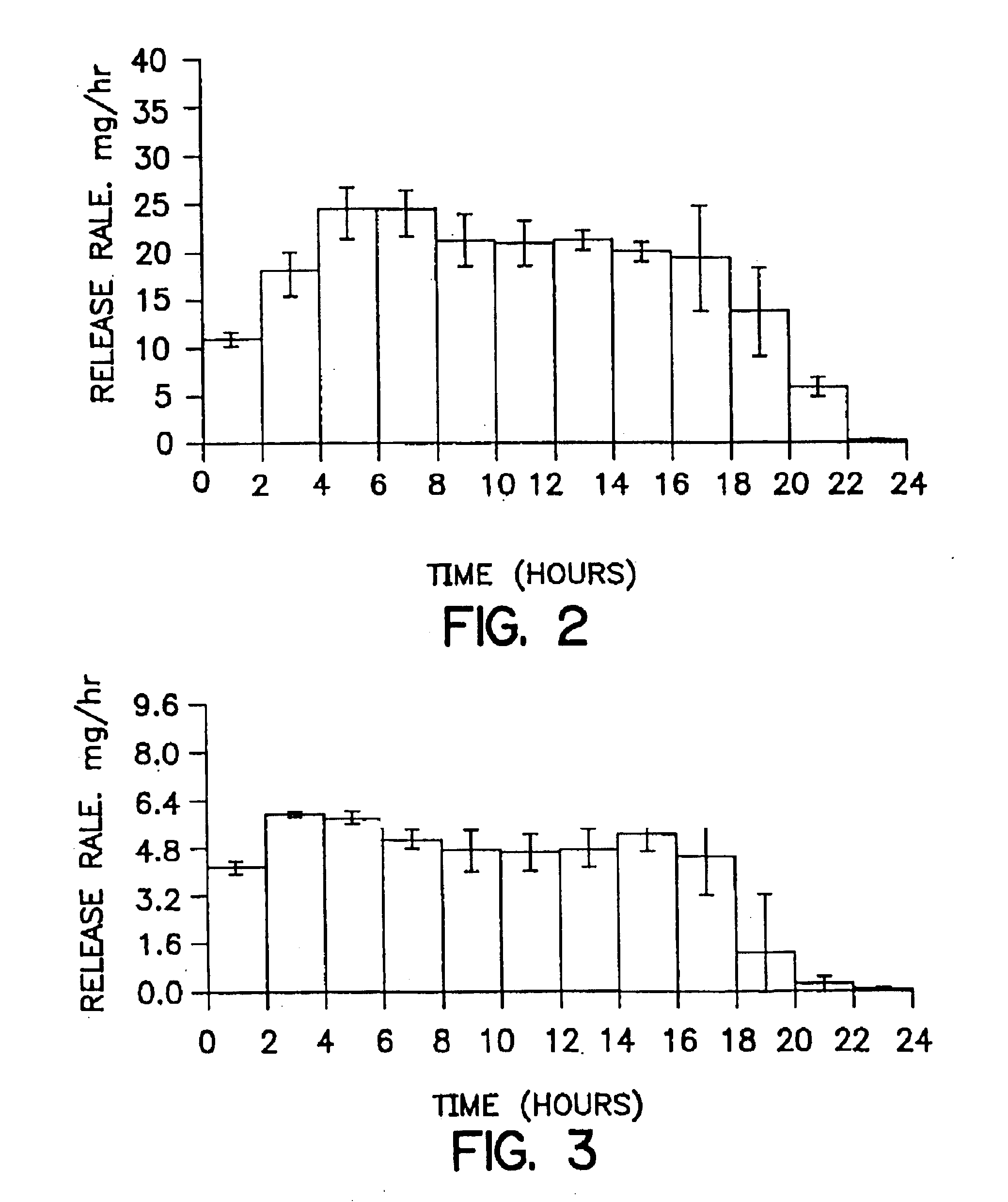Controlled delivery of active agents
a technology of active agents and controlled delivery, which is applied in the direction of biocide, drug compositions, inorganic non-active ingredients, etc., can solve the problems of insufficient dosage form for high drug loading, and insufficient dosage form for devices
- Summary
- Abstract
- Description
- Claims
- Application Information
AI Technical Summary
Problems solved by technology
Method used
Image
Examples
example 1
[0090]Preparation of the Drug Layer Granulation
[0091]A binder solution is prepared by adding hydroxypropyl cellulose (Klucel MF, Aqualon Company), “HPC”, to water to form a solution containing 5 mg of HPC per 0.995 grams of water. The solution is mixed until the hydroxypropyl cellulose is dissolved. For a particular batch size, a fluid bed granulator (“FBG”) bowl is charged with the required amounts of nefazodone HCI (69.0%), polyethylene oxide (MW 200,000) (Polyox® N-80, Union Carbide Corporation) (20.3%), hydroxypropyl cellulose (Klucel MF) (5%), polyoxyl 40 stearate (3%) and crospovidone (2%). After mixing the dry materials in the bowl, the binder solution prepared as above is added. Then the granulation is dried in the FBG to a consistency suitable for milling (<1% by weight water), and the granulation is milled through a 7 or a 10 mesh screen.
[0092]The granulation is transferred to a tote blender or a V-blender. The required amounts of antioxidant, butylated hydroxytoluene (“BH...
example 2
[0111]The release rate of drug from devices containing the dosage forms of the invention is determined in the following standardized assay. The method involves releasing systems into acidified water (pH 3). Aliquots of sample release rate solutions are injected onto a chromatographic system to quantify the amount of drug released during specified test intervals. Drug is resolved on a C18 column and detected by UV absorption (254 nm for nefazodone hydrochloride). Quatitation is performed by linear regression analysis of peak areas from a standard curve containing at least five standard points.
[0112]Samples are prepared with the use of a USP Type 7 Interval Release Apparatus. Each system (invention device) to be tested is weighed. Then, each system is glued to a plastic rod having a sharpened end, and each rod is attached to a release rate dipper arm. Each release rate dipper arm is affixed to an up / down reciprocating shaker (USP Type 7 Interval Release Apparatus), operating at an amp...
example 3
[0113]Employing the general procedure of EXAMPLE 1 and proportionate amounts of materials (all percentages expressed as weight percentages), the following dosage form containing 100 mg nefazodone hydrochloride is prepared.
[0114]A drug layer having a weight of 145.0 mg consisting of 69% nefazodone hydrochloride, 20.24% polyethylene oxide (Polyox N-80), 5% hydroxypropyl cellulose (Klucel MF), 3% polyoxyl 40 stearate (MYRJ 52S), 2% crospovidone (PVP XL), 0.75% stearic acid and 0.01% butylated hydroxytoluene (BHT) is prepared. A push layer is prepared having a weight of 92 mg consisting of 63.67% polyethylene oxide (Polyox 303), 30.0% sodium chloride, 5% hydroxypropyl methylcellulose (HPMC E-5), 1% red ferric oxide, 0.25% stearic acid and 0.08% BHT. The bilayer core comprising the drug layer and the push layer is tableted as described.
[0115]Next, a subcoat is prepared with 70% Klucel EF and 30% povidone K29-32 with ethanol as the solvent. The subcoat contains 8% solids on application. A...
PUM
| Property | Measurement | Unit |
|---|---|---|
| time | aaaaa | aaaaa |
| time | aaaaa | aaaaa |
| time | aaaaa | aaaaa |
Abstract
Description
Claims
Application Information
 Login to View More
Login to View More - R&D
- Intellectual Property
- Life Sciences
- Materials
- Tech Scout
- Unparalleled Data Quality
- Higher Quality Content
- 60% Fewer Hallucinations
Browse by: Latest US Patents, China's latest patents, Technical Efficacy Thesaurus, Application Domain, Technology Topic, Popular Technical Reports.
© 2025 PatSnap. All rights reserved.Legal|Privacy policy|Modern Slavery Act Transparency Statement|Sitemap|About US| Contact US: help@patsnap.com



